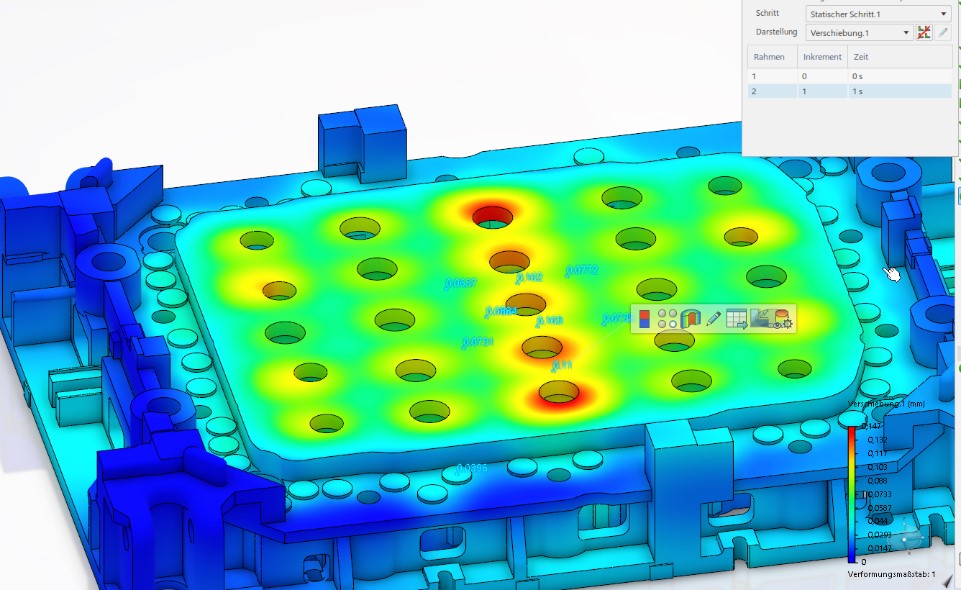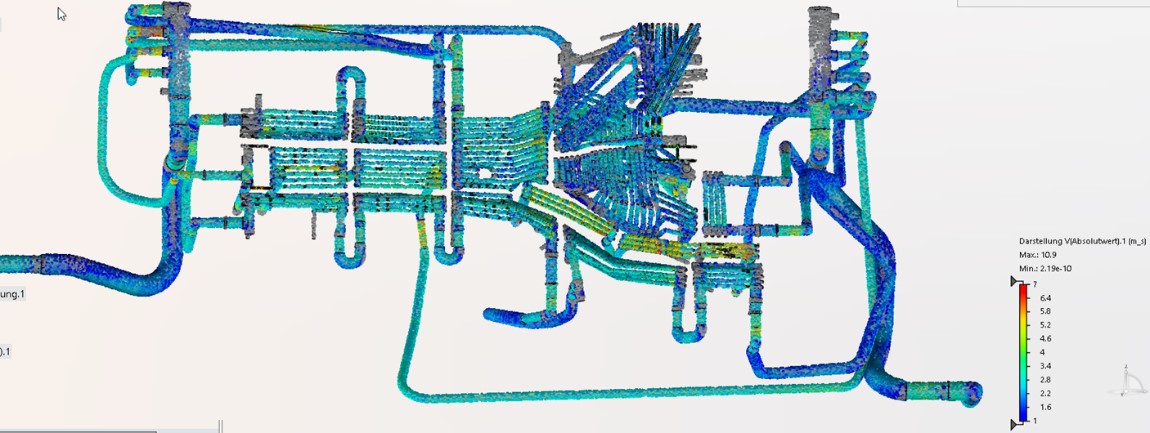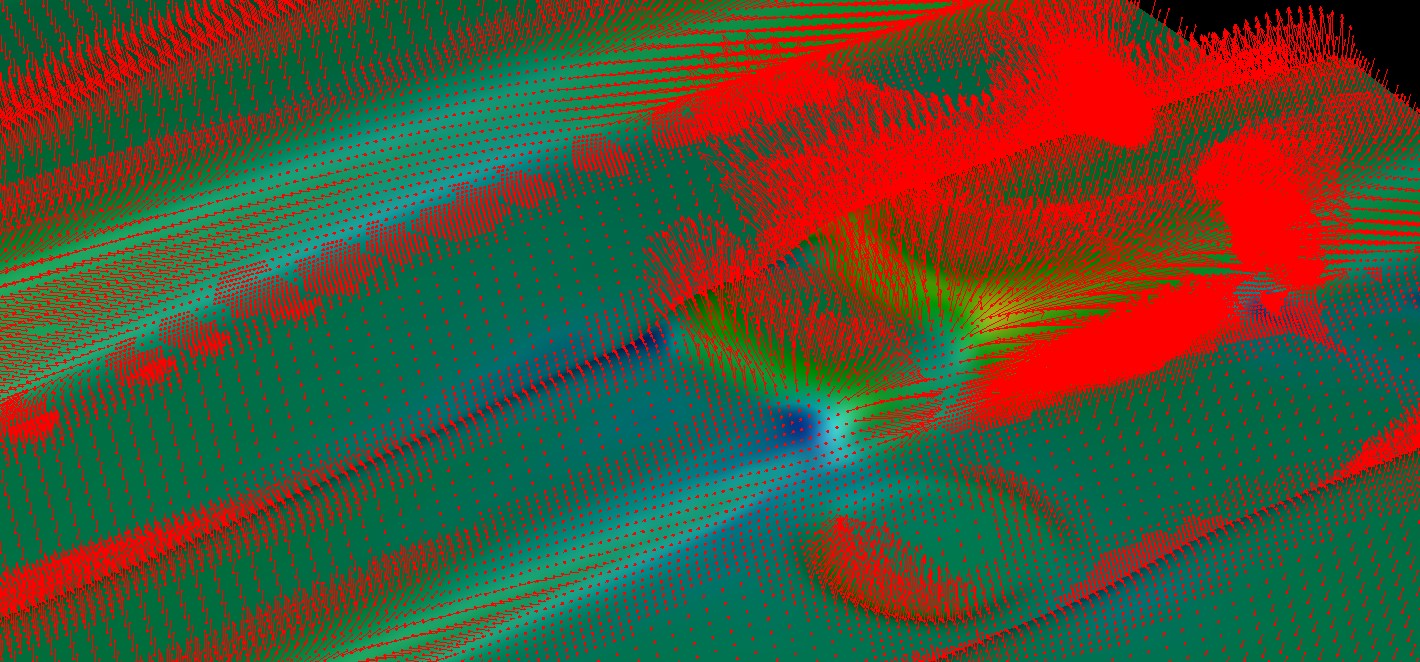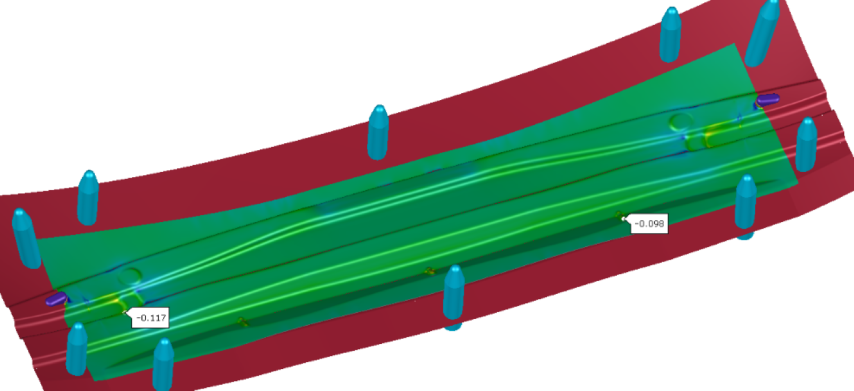CAE Simulation as the Key to Developing High-Precision Tools
Sheet Metal Forming Simulation for Validating Forming Methodology
At weba Werkzeugbau, initial forming studies are conducted as early as the quotation phase to ensure a well-founded feasibility assessment at an early stage. The goal is to establish a reliable foundation from the outset—ensuring high production reliability for the final tools. Modern simulation tools enable the early identification of potential manufacturability issues, the determination of the actual need for tool components, and the verification of the planned centering concept.
The simulation and method development phase is the first and most crucial step in the development of high-precision weba tools.
Strength Analysis for Optimizing Tool Stability
Not all tools are created equal—without a stable foundation for tool components, they cannot function as intended. That’s why weba has long relied on strength simulations to provide tool elements with a deflection-reduced foundation. The designs of weba Werkzeugbau are characterized by high stability combined with low weight—without compromising performance.
This is precisely why weba tools have been a benchmark for automotive customers for decades.
CFD Simulations for the Optimal Design of Cooling Concepts
In press hardening, efficient heat dissipation plays a crucial role alongside optimal forming and a stable tool structure. The experienced design team at weba applies its extensive expertise to developing optimized cooling systems. Additionally, CFD simulation helps identify and optimize potentially poorly cooled areas at an early stage. Thanks to this combination, weba press hardening tools set the benchmark in cooling system efficiency, with CFD simulations further enhancing performance.
Virtual Die Spotting for Enhancing Cooling Rates and Dimensional Stability
With a stable tool and an optimized cooling system, the glowing hot sheet metal reaches its decisive moment. After perfect forming, the hardening process begins at the end of each press stroke—where rapid heat extraction through a precisely machined tool surface is essential. Thanks to Virtual Die Spotting, thinning information obtained from forming simulations can be directly integrated into the milling surfaces. This ensures an almost perfect tool contact at every point of the component.
The result: higher part quality, dimensionally accurate components at an early stage, and extremely short holding times—leading to increased productivity and maximum efficiency.
MultiCycle Forming Simulations for Final Validation
Despite all efforts to develop the perfect tool, a press hardening tool is not free from physical influences. Various factors, such as required tool components, design constraints, unfavorable part geometries, or tool separations, can affect the quality of the final component. MultiCycle simulations involve repeated sheet metal forming simulations, incorporating the cooling system and all tool components. They replicate the ramp-up phase of a production cycle, helping to analyze potential influences on forming results and tool surface temperatures.
If undesired hot spots occur on the tool or component, they can be identified and optimized before the actual production process begins—preventing issues that would otherwise be difficult to foresee.
Scatter Simulations for Risk Assessment
While MultiCycle simulations are used exclusively in press hardening, scatter simulations are also applied in cold forming. Various factors, such as fluctuations in sheet material properties, sheet thickness tolerances, lubrication effects, slight deviations in sheet positioning, or variations in blank holder pressure, impact the dimensional accuracy of the final part.
Scatter simulations allow these effects to be analyzed early on. This enables manufacturers to assess how consistently they can produce with the tool during the development phase. Especially when working with ultra-high-strength steels, this method provides a reliable risk assessment as early as the quotation phase.
What Makes CAE at weba So Special?
The team at weba remains the foundation of our "world-class press tools." Modern CAE technologies only reach their full potential when skilled professionals apply and further develop them strategically. With a customer-oriented and cross-process approach, weba’s experts holistically analyze production, forming, and manufacturing processes to derive well-founded measures. They do not work alone but develop creative solutions as a team, carefully evaluating them and integrating them into the final products.



